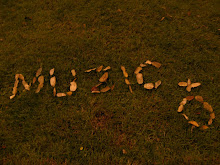In 1856 Kollicker and Mueller discovered the electrical activity of the heart when a frog sciatic nerve/gastrocenemius preparation fell onto an isolated frog heart and both muscles contracted synchronously. Alexander Muirhead attached wires to a feverish patient's wrist to obtain a record of the patient's heartbeat while studying for his DSc (in electricity) in 1872 at St Bartholomew's Hospital This activity was directly recorded and visualized using a Lippmann capillary electrometer by the British physiologist John Burdon Sanderson.The first to systematically approach the heart from an electrical point-of-view was Augustus Waller, working in St Mary's Hospital in Paddington, London.His electrocardiograph machine consisted of a Lippmann capillary electrometer fixed to a projector. The trace from the heartbeat was projected onto a photographic plate which was itself fixed to a toy train. This allowed a heartbeat to be recorded in real time. In 1911 he still saw little clinical application for his work.
The Cambridge VS4, a popular ECG instrument of the 1970's and 1980's. Solid state technology.
The breakthrough came when Willem Einthoven, working in Leiden, The Netherlands, used the string galvanometer invented by him in 1901, which was much more sensitive than the capillary electrometer that Waller used.
Einthoven assigned the letters P, Q, R, S and T to the various deflections, and described the electrocardiographic features of a number of cardiovascular disorders. In 1924, he was awarded the Nobel Prize in Medicine for his discovery.
The Cambridge Simpliscribe, a popular ECG instrument of the 1950's and 1960's. Vacuum tube technology.
Though the basic principles of that era are still in use today, there have been many advances in electrocardiography over the years. The instrumentation, for example, has evolved from a cumbersome laboratory apparatus to compact electronic systems that often include computerized interpretation of the electrocardiogram[citation needed].
Thursday, July 26, 2007
Subscribe to:
Post Comments (Atom)


No comments:
Post a Comment